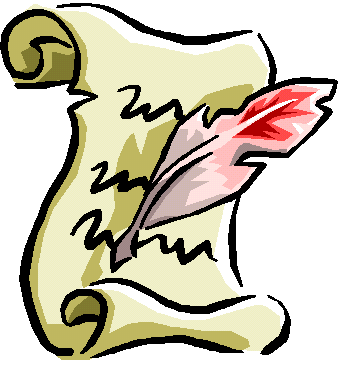Tom Weck and his wife Sandra, who live in Wilmington, Delaware, have four children — David, 42, Peter, 41, and Kathryn, 39 and Andrew, 32– and seven grandchildren. Tom, a retired engineering and environmental executive, and Peter are co-authors of a series of children’s books about a kingdom of beans, the size of lima beans, who overcome many of the challenges that small children face. Among the titles are “The Labyrinth,” “The Megasaurus,” “The Cave Monster,” and “How Back-Back Got His Name.” For more details, see limabearpress.com.
Dear Peter,
This is a long overdue letter to thank you for pushing me to share with others the Lima Bear Stories that I made up and told to you and your brother David and sister Kathryn (and, of course, to Andrew, too, later on)when you were all somewhere between three and eight years old.
I can still picture the four of us in the double bed with my arms cuddling the three of you as you all eagerly awaited the story. You all loved the bean-sized characters because, as small children, you could relate your own challenges in coping with an “oversized” world designed for adults to the challenges faced by these tiny beans.
Some of the Lima Bear stories I must have told to you kids at least 10 times. You can imagine my delight when I discovered that all of you seemed just as happy hearing an already-told story over again. You and your siblings would, on occasion, tell some of the stories to each other – a delightful experience for me whenever I witnessed this.
You were always my biggest fan. You would laugh the most, even at a story you had heard many times before. Your laughter was a great tonic to me.
But all this storytelling introduced an unexpected challenge. When I retold a story, sometimes I was unable to recall all of the original details. But you could, and whenever I made a “mistake” — for example, calling King Limalot’s robe red when I had originally called it purple — invariably you would correct me. Sometimes, particularly when I was really tired from a hard day at the office, it seemed I made a lot of mistakes. Your corrections became so numerous as to interrupt the flow of the story.
Finally, your exasperated brother, David, would say, “Peter, just let Daddy tell the story. What difference does it make if he called the robe‘red’?”
Kathryn, the born mediator of the family, would then chime in, “But David, it was purple.”
I needed a solution, and I needed it pronto. At first, trying to remember every detail of a retold story proved inadequate. Then I latched onto a different strategy. A case in point: as a story came to a certain point, I would say, “And the king’s robe colored a beautiful…Peter, I bet you remember the color of the robe.”
Without a pause, you would advise that it was purple.
And I would say, “That’s right, purple,” and go on with the story.
This approach seemed to satisfy all parties.
Luckily, in 2000, you approached me at the age of 29 to volunteer to join forces with me to create a children’s book publishing company. You were concerned that the Lima Bear Stories, now fallow, would vanish unless put into print. You began a campaign to prevent this from happening. The idea was that we would each contribute our memories, still vivid, to bring these stories back to life.
It was your persistence that led us into this venture. As I once told you, if you were ever reincarnated as an inanimate object, you would come back as the tide. And we’ve collaborated ever since. And what a joy it is for me to have this unique relationship with you as we reconstruct the stories. I think both of us are still young at heart, with all the wonderment, curiosity and innocence of children.
Our partnership has warmed me in ways hard to express in words. And as we reconstruct the stories, hearing you laugh all over again with that same infectious laugh as when you first heard these stories motivated me even more and made me glow inside. It has lent to our togetherness as father and son a new, wonderful dimension.
Your memory has surely proved useful as we reconstructed the stories for ultimate publication through our company, Lima Bear Press, LLC. Thanks to you, and to our combined efforts, and also to our team of five professionals, eleven stories are now written, with four published and a fifth due out early this year.
Love,
Dad











